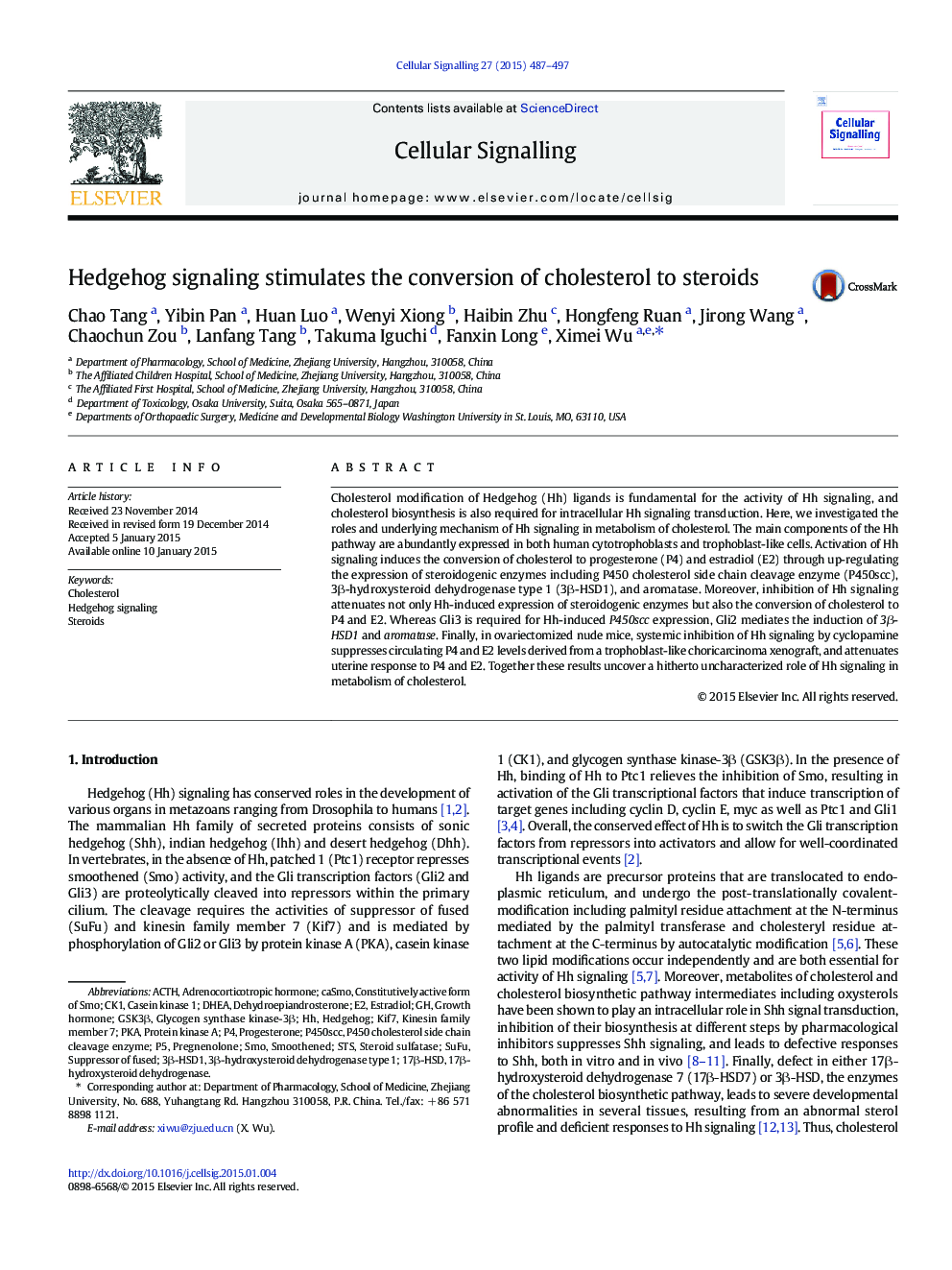| Article ID | Journal | Published Year | Pages | File Type |
|---|---|---|---|---|
| 10815935 | Cellular Signalling | 2015 | 11 Pages |
Abstract
Cholesterol modification of Hedgehog (Hh) ligands is fundamental for the activity of Hh signaling, and cholesterol biosynthesis is also required for intracellular Hh signaling transduction. Here, we investigated the roles and underlying mechanism of Hh signaling in metabolism of cholesterol. The main components of the Hh pathway are abundantly expressed in both human cytotrophoblasts and trophoblast-like cells. Activation of Hh signaling induces the conversion of cholesterol to progesterone (P4) and estradiol (E2) through up-regulating the expression of steroidogenic enzymes including P450 cholesterol side chain cleavage enzyme (P450scc), 3β-hydroxysteroid dehydrogenase type 1 (3β-HSD1), and aromatase. Moreover, inhibition of Hh signaling attenuates not only Hh-induced expression of steroidogenic enzymes but also the conversion of cholesterol to P4 and E2. Whereas Gli3 is required for Hh-induced P450scc expression, Gli2 mediates the induction of 3β-HSD1 and aromatase. Finally, in ovariectomized nude mice, systemic inhibition of Hh signaling by cyclopamine suppresses circulating P4 and E2 levels derived from a trophoblast-like choricarcinoma xenograft, and attenuates uterine response to P4 and E2. Together these results uncover a hitherto uncharacterized role of Hh signaling in metabolism of cholesterol.
Keywords
GSK3βDHEAACTH17β-Hydroxysteroid dehydrogenaseSMOP450sccCK117β-HSDpKadehydroepiandrosteroneSTSSufuEstradiolSteroidsSteroid sulfataseHedgehogpregnenolonesuppressor of fusedHedgehog signalingSmoothenedadrenocorticotropic hormoneGrowth hormoneprotein kinase AProgesteronecasein kinase 1cholesterolGlycogen synthase kinase-3β
Related Topics
Life Sciences
Biochemistry, Genetics and Molecular Biology
Biochemistry
Authors
Chao Tang, Yibin Pan, Huan Luo, Wenyi Xiong, Haibin Zhu, Hongfeng Ruan, Jirong Wang, Chaochun Zou, Lanfang Tang, Takuma Iguchi, Fanxin Long, Ximei Wu,
